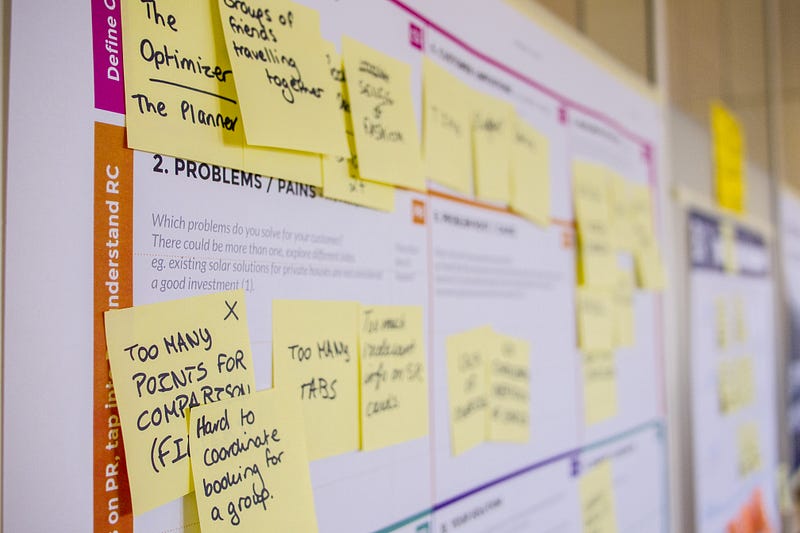Mastering Product Roadmapping in FAANG: A Guide for Managers
Written on
Understanding Product Roadmapping
For those in Product Management at major tech firms, the month of May marks the onset of roadmapping activities. During this crucial period, we outline the product investments slated for the upcoming months and compile these insights into a roadmap that is presented to leadership.
At Instagram, we have already commenced discussions regarding our future investments. In a recent meeting, I shared valuable roadmapping insights tailored for new Product Managers. This marks my eighth foray into roadmap planning, and over the years, I have gleaned several strategies to enhance this process.
Here are three key recommendations for a successful roadmapping phase:
- Grasp the unique responsibilities of a Product Manager.
- Focus on identifying problems rather than prescribing solutions.
- Prioritize communication as a core function of the role.

The Role of a Product Manager in a FAANG Environment
Working as a Product Manager (PM) at Instagram presents a distinct set of challenges compared to similar positions at other organizations. In my previous roles as a PM, I often found myself:
- Designing wireframes as a part-time designer.
- Acting as a scrum master to manage and prioritize tasks for the team.
- Overseeing project timelines as a program manager through Gantt charts.
However, at Instagram, there are cross-functional colleagues who specialize in these roles, which means the team does not micromanage tasks. Initially, my time at Meta left me questioning the essence of my role as a Product Manager.
In a FAANG company, collaboration is key, and every team member is empowered to perform their responsibilities without hierarchical constraints. As a PM, you do not possess authority; your role is not about drafting product specifications, leading stand-ups, or tracking team deliverables.
Instead, think of a Product Manager as a conductor in an orchestra. Your responsibility is to ensure that crucial decisions are made, that all team members have a shared understanding, and to keep everyone aligned and progressing. When challenges arise, you facilitate problem-solving to maintain momentum.
Your focus should be on identifying investment opportunities and motivating your team to pursue them. You ask the essential questions that may have been overlooked, ensuring that the products we deliver are of the highest quality.
Your accountability lies not in completing tasks but in the overall success of your team. Your personal success is measured by the team's ability to achieve its objectives.

Identifying Problems, Not Solutions
As a Product Manager, it’s crucial to avoid dictating solutions. Instead, focus on defining the problems that need addressing. By engaging your team in discussions about the challenges they face, you empower them to explore a variety of potential solutions.
Ensure that your team is aligned with the overarching goals before diving into planning. Consider where you envision this space in five years and how progress will be measured. What steps can be taken to inch closer to this vision?
The team’s focus should be on resolving user-centered issues. If you're managing a platform, guide the team to consider both external and internal user challenges.
Additionally, allow your team to explore ambitious ideas. If there were no constraints in terms of time, budget, or resources, what would they want to create in this domain?

The Importance of Communication
With a clear understanding of your role as PM and a list of problems your team has identified, it’s time to develop your roadmap.
In a large organization, your roadmap serves as a concise overview of your priorities for other teams. Your objective is to communicate the projects clearly, emphasizing the ‘so what’ behind each initiative. Articulate the what and why of each project in straightforward terms—what do we aim to build, and why is it a valuable investment?
Group related projects into themes and utilize the principle of threes. Organize initiatives into three key investment themes that anyone outside your team can easily understand and recount.
Additional Tactical Advice:
- Collaborate with your cross-functional (XFN) partners—successful roadmapping is a collective effort. Gaining support and alignment from your XFN partners is crucial for both your roadmap's success and your own growth as a PM.
- Long-term projects are acceptable—having initiatives that span a year or more is fine. Break them into manageable chunks that can be completed incrementally, facilitating tracking toward these extended objectives.
- Conduct retrospectives for both product insights and team wellness. Reflect on how past initiatives impact future plans.
- Align with partner teams early—if your team’s success hinges on another department, establish alignment early on. Better yet, consider taking on a shared objective for the period to demonstrate commitment to a collective aim.
Chapter 2: Video Insights
In the video titled "Breaking into FAANG Product Management!", industry experts share their experiences and strategies for successfully transitioning into product management roles within top tech companies.
The video "How to Become a Product Manager with NO Experience Even in FAANG Companies" provides valuable advice for aspiring Product Managers looking to break into the field, regardless of prior experience.